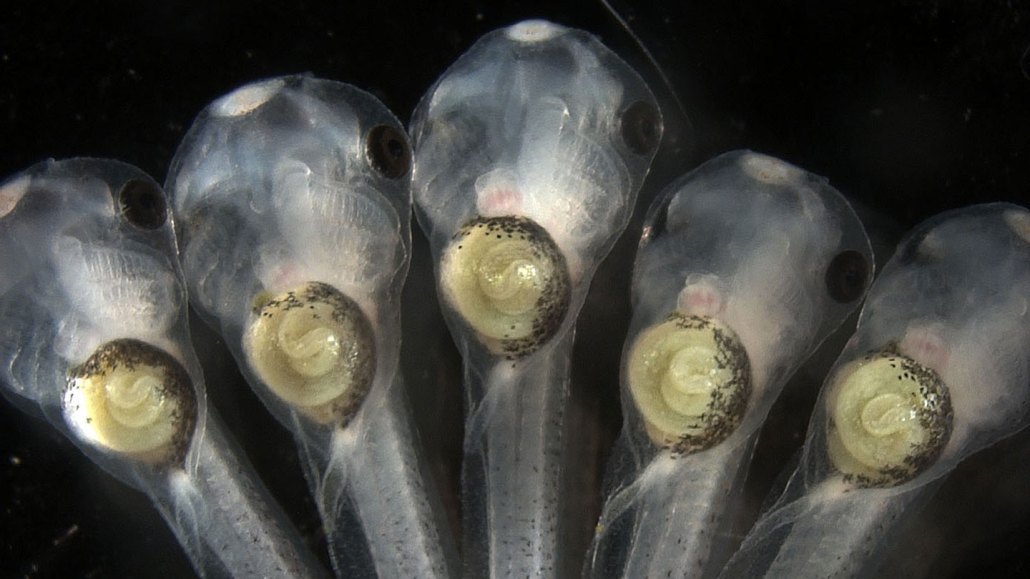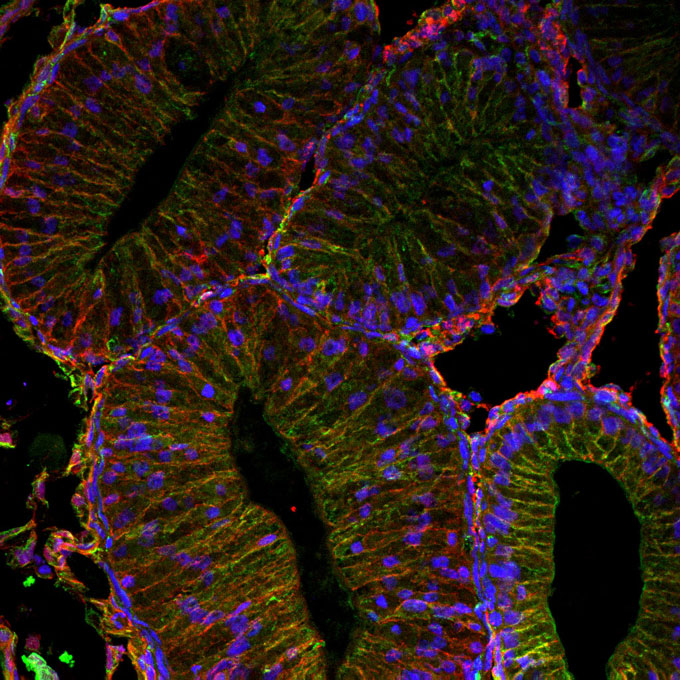Messed-up metabolism during development may lead guts to coil the wrong way
Experiments in tadpoles may provide clues to a condition in people called intestinal malrotation

Like human intestines, frog intestines grow counterclockwise in a compact coil, as shown here in these tadpoles.
Julia Grzymkowski
Inside the African clawed frog, intestines grow just like humans’: neatly coiled counterclockwise. Experiments now show how that process can go awry.
Interfering with tadpoles’ metabolism leads to a chain of cellular disruptions that causes their intestines to grow in the wrong direction, researchers from North Carolina State University in Raleigh report February 19 in Development. Their findings offer new insight into how a similar birth anomaly in humans, known as intestinal malrotation, may occur.
“Anything that illuminates how we could protect the embryo and the fetus early in development and prevent any type of congenital abnormalities is to me fascinating, and it’s exciting,” says Mehul Raval, a pediatric surgeon at Ann & Robert H. Lurie Children’s Hospital of Chicago who was not affiliated with this study.
Intestinal malrotation happens in as many as 1 in 500 human babies, the study’s authors say. But because malrotation can go undetected for a long time, it’s possible there are even more cases, Raval says. It’s most often detected when the gut gets so twisted it leads to obstructions or blocks blood flow.
“Think of the intestine as a garden hose,” says Nanette Nascone-Yoder, a developmental biologist at N.C. State. “You have to pay careful attention as you wind it up to avoid kinks and knots.”
Malrotation can happen in conjunction with other anomalies, but there’s no known cause, says Janice Taylor, a pediatric surgeon at the University of Florida in Gainesville who was not involved in the study.
Nascone-Yoder and colleagues turned to frog embryos because the animals’ intestines are long and looping, like those in humans. Plus, the embryos develop outside of their mothers’ body and are transparent, so their growth is easy to monitor.
In frogs — and in people — the intestine typically winds counterclockwise as it develops. This happens early in a tadpole’s development, roughly between the third and fourth day. The researchers exposed Xenopus laevis embryos to atrazine, a common herbicide and known hormone disruptor in humans, both before and during this stage of development (SN: 1/21/15). They found that many of the frogs’ intestines coiled clockwise — the wrong direction.

In further tests, the researchers found that atrazine disrupted the metabolism of the tadpoles, creating a domino effect that prevented the complete conversion of glucose to energy. “We can infer that [this reaction] inhibits the ability of cells to arrange in the growing intestine,” Nascone-Yoder says. In the case of the frogs, their intestines not only coiled clockwise but also were too stunted to fill the space they ordinarily would.
This doesn’t mean atrazine is causing intestinal malrotation in humans. In fact, the researchers used levels of atrazine that were 1,000 times higher than what’s normally found in the environment. But it does mean that metabolic disruption may play a role. “It’s possible that either an environmental [effect] or some sort of genetic defect, like an inborn error of metabolism, for example, could subtly affect the lengthening of the GI tract in humans as well,” Nascone-Yoder says.
The researchers also found increased levels of damaging molecules called free radicals in tadpoles exposed to the herbicide. In excess, these free radicals can harm processes that help grow intestines. But they can be combated with antioxidants, so when the tadpoles were treated with antioxidants before being exposed to the herbicide, over half of the tadpoles grew normal, healthy intestines.
While this study doesn’t provide an answer as to what causes intestinal malrotation in human fetuses, or if antioxidants can prevent it, it’s a step closer. “The point is that our study opens up new avenues to look at, because prior to this, there really [wasn’t] a whole lot of explanation for intestinal malrotation,” Nascone-Yoder says.







